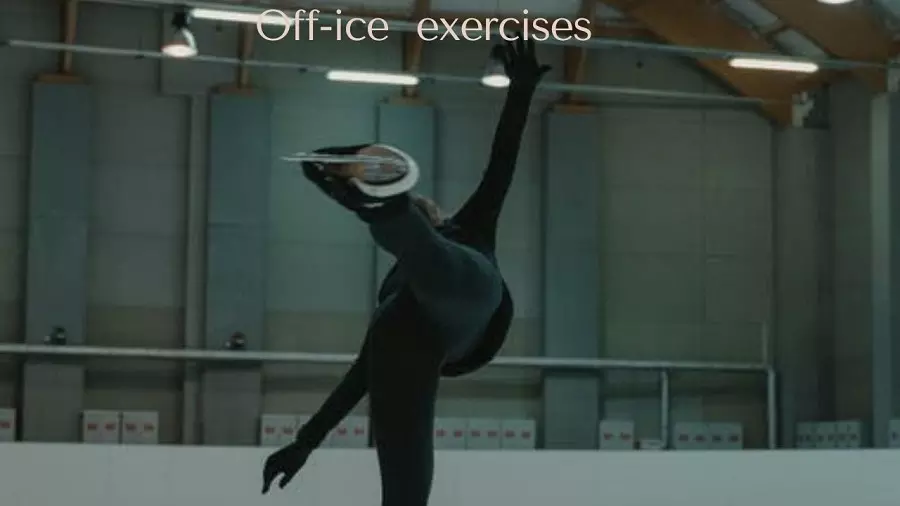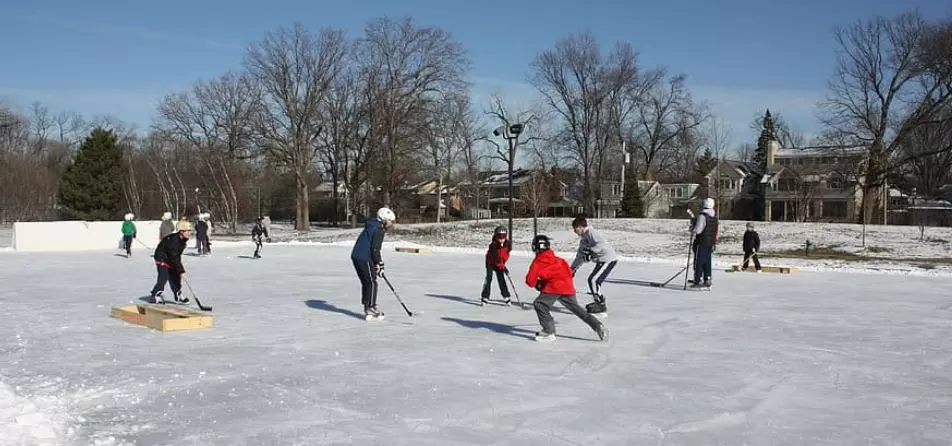Last updated on April 7th, 2022 at 09:10 pm
Although ice skating isn’t a year-round sport for many, few winter activities seem to fit the season as well as it does when the temperatures drop. Even so, putting on skates, especially as an adult, can be scary if you have no experience. Mastering new abilities to improve your on-ice form if you’re feeling wobbly. Gliding on frozen surfaces can be fun while also keeping you in shape for other activities.
One of the most common errors adults make when they go onto the ice is tightening up out of fear. Since your strained muscles can’t absorb force as well, falls become significantly more unpleasant.
Off-ice exercises for beginner figure skaters
Figure skating necessitates a high level of hip and knee flexibility while also maintaining core and pelvic stability. These exercises can help you improve core strength and hip mobility while maintaining appropriate posture.
Some off-ice exercises for beginners:
- Stretch your hip flexors.
- Stretch your hamstrings in a supine position.
- Stretching the quads
- Openers for the hips
- Balance/single-leg deadlift
- Squat leaps, lunge jumps, or star jumps
- Skipping
- Jumps in rotation
Before getting on the ice, do some dynamic stretching to properly activate and extend muscle tissue for the skating session. To focus on improving muscle length in the targeted muscle region, static stretching should be conducted after the skate session.
How to get better at ice skating off-ice
Without ice, there are various ways to practice ice skating. Dryland training and workouts, as well as cross-training on rollerblades. Rollerblading and ice skating are related to skating disciplines in that they use similar stopping and turning techniques.
Then you can practice these skills on rollerblades before moving on to ice skates. Take advantage of the following workouts to get better at ice skating: They include
1. Pose in the chair:
Bend your knees until your thighs are as close to parallel with the ground as possible, with your feet hip-width apart and your hands out in front. Next, raise your hands above your head. Do numerous reps while maintaining control, and mix in some static holds.
2. Hip shift with lateral lunge:
Bend one knee and move your weight to the side with your feet wider than your hips. Move your chest and hips towards your outstretched leg with control. To change position, shift your weight and bend your other knee.
3. Figure skating strides:
Bend your knees like you’re skating, with your feet hip-width apart and your hands out in front. Move one foot at a time at a 45-degree angle back and to the side, while simultaneously extending the same-side hand forward. Before moving on to the other side, fully recuperate by bringing your foot and hand back to the middle.
4. Bowler squats:
Start by standing on your right leg and lifting your left foot off the ground. Bend down slowly on your standing leg, extending your floating foot as far behind and across your body as possible without letting your toes touch the floor. Return to the starting position with control and perform many reps on one side before switching to the other.
5. Skater box jumps:
Take steps onto a box or bench with one foot. Jump into the air with your elevated foot engaged, switching feet in mid-flight so your other foot lands on top of the box or bench.
Finally, you can use rollerblades to practice different turn methods like cross-overs and flat spins before applying them to ice skates when you return to the rink. Whether you’re new to rollerblading, it’s not as difficult as you would think.
Ice skating and rollerblading are both skating disciplines that are remarkably comparable in every respect. Therefore, if you already know how to skate on ice skates, occasionally utilizing rollerblades should be rather simple. The first time, though, may be a pain. The good news is that it will improve over time.
Leg conditioning exercises for figure skating
To accomplish edgework and sequences, a skater’s legs must be sufficiently powerful. Skaters must have the strength to send themselves into the air during a leap like an axel or a lutz, as well as the stability to land those jumps gracefully.
For the most part, figure skating is done on one leg at a time, so this must be addressed in training. But that doesn’t mean that double-leg movements like the squat and deadlift shouldn’t be included in a workout, but single-leg strength should be prioritized. The program will be more successful if it is broken down into three primary parts and addressed throughout each session.
Beginner figure skating training schedule for success
To start, you’ll need to locate a rink where you can practice ice skating. Not all ice rinks are created equal.
Several rinks are designed solely for recreational skating or ice hockey, while others are specifically designed for figure skating.
They will have coaches on staff who can guide an ice skater from the beginner level to the elite levels of the sport.
- Begin your day at 4:30 a.m., get dressed, and have a small meal.
- Get to the rink at 5:30 a.m. to conduct some jumping and off-ice training.
- Skate and practice freestyle for two 45-minute sessions at 6 and 6:45 a.m.
- Exit the rink at 7:30 a.m. and go to school.
- Go back to the rink at 3 p.m. to conduct more off-ice leaping and training.
- Between 3:30 and 4:15 p.m., practice two 45-minute freestyle sessions.
- Attend a ballet class or an off-ice workout at 5:15 p.m.
- Dinner should be served at 6 p.m.
- Complete your homework at 6:45 p.m.
- Go to bed at 8 p.m.
Public sessions are ideal for the recreational skater just getting started. They’re affordable and fit into most schedules. Take note that regular sessions can get crowded, and for safety concerns, some figure skating maneuvers may be limited or prohibited.
The best way to acquire additional ice time is to attend public sessions. Skating alongside friends and family members who wish to try it is an added treat. In addition to your learn to skate class or lesson, I recommend doing at least 1-2 hours of public skating each week.
5 best off-ice figure skating training equipment
Skaters require equipment to stay competitive. Skates and a suitable helmet are among them. The blade on the figure and speed skates is more straight.
Off-ice figure skating equipment
- Slide board
- Power Twist
- Sliding discs
- Yoga Wheel
- Stretcher straps
Athletes will not be able to figure skate efficiently if they do not have this straight-edged skate. Skates are used to glide across the ice and accomplish certain maneuvers, while other equipment protects and warms the participant.
4 machine exercises for figure skaters to perform at the gym
Listed in this section are four machines that can be of great help to skaters.
- Treadmill
- Hamstring
- Cable cross machines
- Dumbbells
Planks, also known as bridges, can be done on this equipment to develop your core muscles. While you lie on your stomach with your upper body raised on your elbows and forearms, this exercise requires little motion. Hold your hips above the ground for 10 seconds. To develop your middle abdominal muscles as well as your obliques, execute twisting crunches.
Off-ice leg strengthening exercises for ice skating
Skaters make it look easy, but spinning, jumping, and sticking those landings on the ice takes a lot of strength and stability.
1. Kettlebell Swing/Single Leg Stance:
With a small bend in the knee and hip, stand on one leg. Swing your arm back and forth freely like a pendulum, holding a kettlebell or comparable weight in the opposite hand. The weight will try to knock you off your feet by swinging around. The hip muscles on the leg you’re standing on will be the main focus here.
2. One-legged depth jump:
Place yourself atop a box that is no more than 12 inches high. Drop to the ground and land on one leg as you step off the box. Flex your knee and hip while keeping your knee aligned with your hip to absorb the impact of the ground. Before standing back up, come to a complete stop.
3. Straight leg reverse crunch
While retaining the spine in its natural curved position, this exercise will work your major abdominal muscles, including the external obliques. A strong core is essential for maintaining balance, stability, and control while participating in sports. By adjusting your lever position, adding the straight leg version enhances the challenge.
4. Single leg glute bridge
For skating, stopping, and jumping, skaters require powerful glute muscles. Even if you don’t ice skate, everyone could benefit from additional glute exercise to counteract sitting time. You must contract your abs throughout the workout in order to keep your pelvis level. This will aid in the stabilization of your spine.
5. Cossack Squats
Learning this Cossack squat will help you improve your balance as well as increase strength and stability in each leg independently. The Cossack squat is an excellent workout because it targets the sides of the glutes, which are crucial hip-joint stabilizer muscles that are frequently overlooked.
Ice skating is a sport that requires a lot of strength and endurance. It necessitates a lot of sideways movement, so lateral strength exercises will help you improve your turns and speed. You’ll also need a lot of core strength to keep your body under control. Finally, ice skaters require asymmetrical strength in order to perform one-legged skills.





